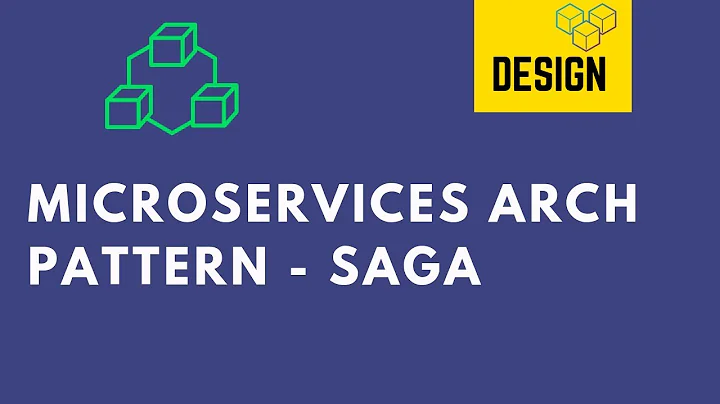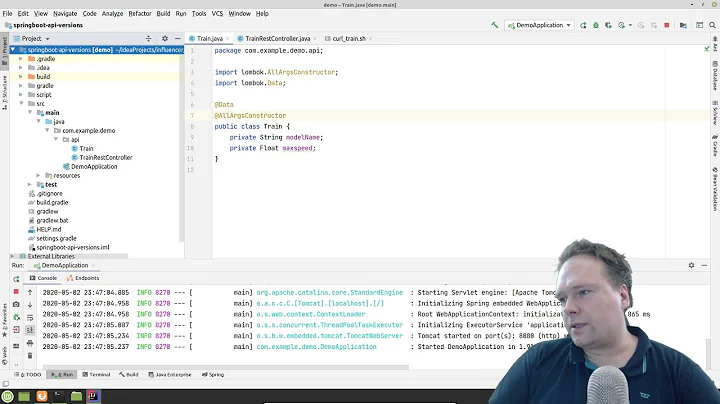Microservice Versioning
Solution 1
I think it is safe to say that as of now it is not a solved problem. In a Microservice Architecture, each service should be loosely coupled. If when you change a producer, you have to hunt down consumers to change them too, then it indicates that you have a design flaw. The routing based versioning presented in the link seems to have much more than a "few drawbacks".
Should you version the entire service or just the api?
If you version the entire service, you will invariably open quite a can of worms. Imagine that you implemented the first version (v1) of a service A. Imagine now that after a while, a new version (v2) had to be implemented because of the business. What happens if a bug is discovered on the v2 of this service? The team should check that the same bug doesnt exist on v1 too. If it does, v1 should be corrected and redeployed too. Even if it is just copy and paste, both versions need to be retested and redeployed. And what if there was refactoring between versions and the way to fix v1 is diferent from the way to fix v2? And what if instead of 2 versions, there are 5 or 10? Someone funnier than me should make a "That scalated quickly" meme for this.
Just by scratching the surface of how much headache this option could give, we basically can already decide by versioning just the api. But basically if you version your service on the code level:
- The team just has to support one version of the service (bugs are just corrected once)
- Less cognitive drain on the team for not having to understand tons of different and potentially very distinct versions of the service
- Less resource consumption
- Garantee that everything is consistent between versions (if not a garantee, at least it is much more probable)
How the client communicate what version of the api they will consume?
For this answer, I will refer only to REST apis because its what i know enough to talk about. There are basically 4 ways of versioning the api (that i can think of):
- Versioning the URI: "http://host/serviceA/v3/whatever"
- Version in the Accept Header
- Version in Custom Header
- Version as parameter
This tutorial will explain each one of these with their drawbacks better than me, but basically anyone of these should do just fine =)
How (the f*****g hell) do I sustain inumerous service versions in the same code? (are you crazy???)
Your service per se is just one. What you should do is apply Adapter Design pattern, so as to exist different versions of ins and outs interacting with the business layer of your service. This way you just have some versions of some objects, with it being transparent to the core of the service. It is the same conclusion of the article mentioned in the question, and it even has a neat example to showcase it.
Solution 2
you can mix and match of different stretagies
For Major changes you can use Routing based versioning
For other you can use Adapter Based Versioning
Solution 3
What is the best practice to adapt for versioning in a Microservice Based Architecture
One strategy that I use in my microservice project is to version through routing.
We use JSON RPC 2.0 so it's a little different from REST but it can be applied.
We only use major versioning and try to live with the old and the new version at the same time to let the time to consumer to be updated.
Things to take care of
Avoid having more than two versions of a service in production (really hard to manage if you have some model updates).
Find a way to tell the consumer that the version there are using is deprecated.
I know that some microservice architecture lives without versioning but it means that you have a strong coupling between consumer and producer so I may not recommand this approach.
To answer the second question
how the consumers would be able to use different versions?
It sounds not possible because a consumer should only use one version at a time.
If you want it to know that the version is available to use it at runtime you can walk through feature flipping coupled with a service discovery.
Your consumer will ask regularly to a service discovery if the route x exists. If true then use the feature, otherwise continue with the current version. It could works but it is kinda tricky to manage.
Related videos on Youtube
Divs
Updated on September 15, 2022Comments
-
Divs over 1 year
What is the best practice to adapt for versioning in a Microservice Based Architecture, in terms of supporting multiple versioned deployment of the same service during runtime and how the consumers would be able to use different versions? 1) If we use Routing based Versioning as one of the approaches mentioned here then I guess we would have the following drawbacks
- Internal Services have to go through Reverse Proxy for consumption.
- Consumers always have to be aware of the required versioning.
Is it a best practice to expose the version information to consumers?
In any case, as I feel, the following always applies:
- For MAJOR version change, the consumers have to be changed.
- For MINOR version change (backwards compatible), only the consumer(s) that requires the added functionality needs to change.
- For PATCH version change, it's optional and would probably be seamless for any consumers to make use of it.
What kind of Microservice versioning strategy can help us in enabling the above?
NOTE - Please feel free to let me know if this needs to be split in multiple questions.
-
Ahmed Mahmoud about 4 yearsVery informative. Thank you for your time and efforts.
-
Rhys over 3 years> "If when you change a producer, you have to hunt down consumers to change them too, then it indicates that you have a design flaw" I think this statement is a bit flawed. It's impossible to introduce an API change without considering the consumers - the second you have a single consumer, no amount of loose coupling will save you. The real point to consider is whether the API changes are backwards compatible or not, so it'd be more accurate to say that if you're changing an existing API (e.g. v1) you shouldn't have to hunt down consumers and change them (instead, you'd write a v2)
-
 Adamantish over 3 years@Rhys I think that's just what the OP is saying. If you just create a v2 then you don't "have" to hunt down all consumers you just want to help upgrade the relevant consumers.
Adamantish over 3 years@Rhys I think that's just what the OP is saying. If you just create a v2 then you don't "have" to hunt down all consumers you just want to help upgrade the relevant consumers.







